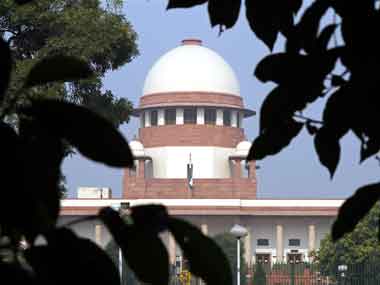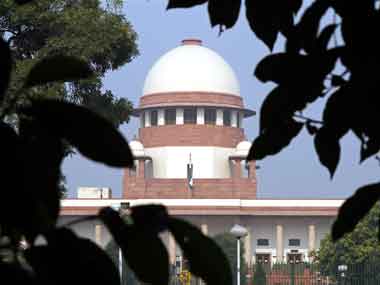Just as the old Supreme Court collegium system of appointing judges to the higher judiciary is about to fade into history, we are now getting stories detailing how the actual process works – or doesn’t quite work. The collegium system will formally end once the government sets up the six-member National Judicial Appointments Commission (NJAC), now that the constitutional amendment law has been passed by more than half the states of the Indian Union. But one of the collegium’s last recommendations – still to be given effect to by the government – appears to have generated a controversy. According to this Indian Express report (5 January), the collegium decided to transfer a judge of the Allahabad High Court to Karnataka even though two Supreme Court judges had objected to it, and the judge concerned would have been in line for becoming chief justice at the high court around mid-year this year. [caption id=“attachment_1837293” align=“alignleft” width=“380”]  Reuters[/caption] The judge who is being transferred is Justice Vineet Saran, and one of the judges who opposed his transfer was Justice Shiva Kirti Singh, a former CJ of the Allahabad High Court. More importantly, the Express story alleges that Justice Singh talked about a “lobby” that was keen to move Justice Saran since he had a good record. The other objection came from Justice RK Agrawal, who apparently felt that if Justice Saran was to be moved out, the judge next in seniority should also be transferred. It is possible to surmise why he may have suggested this. Once Justice Saran moves, logically the one next in line will benefit and become eligible to be chief justice of the Allahabad High Court when the current two judges above him retire this year. In order to counter the “lobby” – if there is one – the next in line should also be moved seems to be the logic. Obviously, it is not going to be possible to verify the claims of there being a “lobby” against Justice Saran. Nor is it going to be clear why the Chief Justice of India (CJI), HL Dattu, over-ruled the two objections raised to Justice Saran’s transfer. This is precisely the kind of non-transparent working of the Supreme Court collegium that the NJAC should try to avoid when it comes into force. We would not have known this but for the Express report, which, anyway, may not be authenticated by the collegium. We got to learn about some of not-so-happy actions of the collegium only after re tired SC judge Markandey Katju decided to blog about it. Hopefully, the NJAC will avoid the charge of non-transparency. The NJAC will be a six-member body with the CJI and two senior-most judges of the Supreme Court as members; plus there will be the Law Minister and two “eminent persons” nominated by another three-member committee comprising the PM, the CJI and the leader of the opposition. It is too early to say how well the NJAC will work, for currently the Supreme Court is suspicious of the government’s intent in legislating the new Commission to select and transfer judges. Also, the NJAC is being challenged on its constitutional validity by senior Supreme Court judges. To make it work, the NJAC clearly has to decide on transparent procedures for short-listing and assessing candidates for the higher judiciary. This is the consensus the government should build with the Supreme Court in the initial months. The law allows any two members of the NJAC to block a candidate’s appointment or transfer. It is not clear if the decision to transfer the Allahabad High Court judge to Karnataka, possibly one of the last acts of the collegium, will be cleared by the government in view of the President’s assent to the NJAC. It would also make for an interesting test case for the new NJAC.
The SC collegium, which operated in an opaque way, has taken a controversial decision in one of its last acts before it is replaced by the National Judicial Appointments Commission
Advertisement
End of Article
Written by R Jagannathan
R Jagannathan is the Editor-in-Chief of Firstpost. see more


)

)
)
)
)
)
)
)
)



